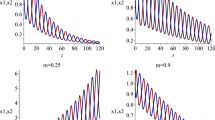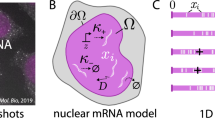Abstract
The Fokker–Planck equation is a partial differential equation that describes the evolution of a probability distribution over time. It is used to model a wide range of physical and biological phenomena, such as diffusion, chemical reactions, and population dynamics. Solving the Fokker–Planck equation is a difficult task, as it involves solving a system of coupled nonlinear partial differential equations. In general, analytical solutions are not available and numerical methods must be used. In this research, we propose a novel approach to the solution of the Fokker–Planck equation in a short time interval. The numerical solution to the equation can be obtained iteratively using a new technique based on the short-time drift propagator. This new approach is different from the traditional methods, as the state-dependent drift function has been removed from the multivariate Gaussian integral component and is instead presented as a state-shifted element. We evaluated our technique employing a fundamental Wiener process with constant drift components in both one- and two-dimensional space. The results of the numerical calculation were found to be consistent with the exact solution. The proposed approach offers a promising new direction for research in this area.


Similar content being viewed by others
References
H. Risken, Fokker–Planck equation (Springer, 1996)
T.D. Frank, Nonlinear Fokker–Planck equations: fundamentals and applications (Springer-Verlag, 2005)
S. Challa, Y. Bar-Shalom, IEEE Trans. Aerosp. Electron. Syst. 36, 309 (2000)
Y. Xu, P. Vedula, Automatica 45, 1291 (2009)
R.A. Moore, A. Narayan, Appl. Math. Comput. 431, 127298 (2022)
M.F. Wehner, W. Wolfer, Phys. Rev. A 27, 2663 (1983)
G.M. Subramaniam, P. Vedula, J. Comput. Phys. 346, 49 (2017)
L. Apaza, M. Sandoval, Phys. Rev. E 101, 032103 (2020)
H. Stark, J.W. Woods, Probability and random processes with applications to signal processing (Prentice-Hall Inc, 2002)
M. Abramowitz, I.A. Stegun, Handbook of Mathematical Functions with Formulas, Graphs, and Mathematical Tables. National Bureau of Standards Applied Mathematics Series 55. Tenth Printing. (Dover, 1972)
W.H. Press, B.P. Flannery, S.A. Teukolsky, W.T. Vetterling, Numerical recipes in C: the art of scientific computing, 2nd edn. (Cambridge University Press, Cambridge, 1992)
P. Jäckel, London: ABN-Amro. Re (2005)
Acknowledgements
This research project was supported by the Thailand Science Research and Innovation Fund and the University of Phayao (Grant no. FF65-RIM070).
Author information
Authors and Affiliations
Corresponding author
Rights and permissions
Springer Nature or its licensor (e.g. a society or other partner) holds exclusive rights to this article under a publishing agreement with the author(s) or other rightsholder(s); author self-archiving of the accepted manuscript version of this article is solely governed by the terms of such publishing agreement and applicable law.
About this article
Cite this article
Mangthas, W., Ngamsaad, W. A short-time drift propagator approach to the Fokker–Planck equation. J. Korean Phys. Soc. 84, 173–179 (2024). https://doi.org/10.1007/s40042-023-00967-8
Received:
Revised:
Accepted:
Published:
Issue Date:
DOI: https://doi.org/10.1007/s40042-023-00967-8




